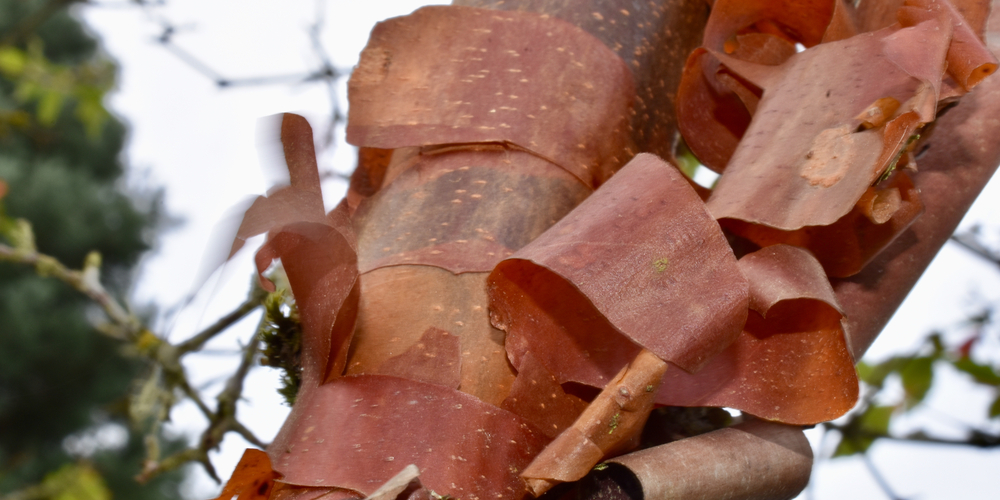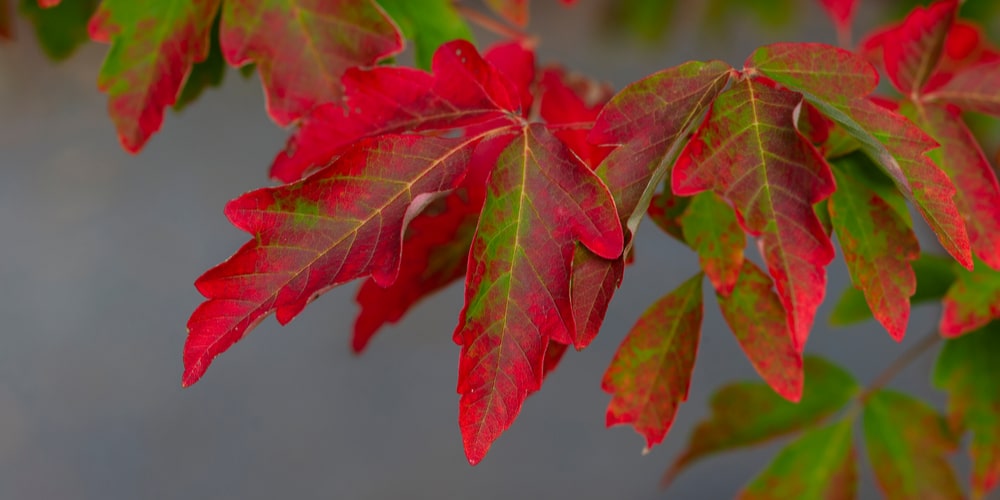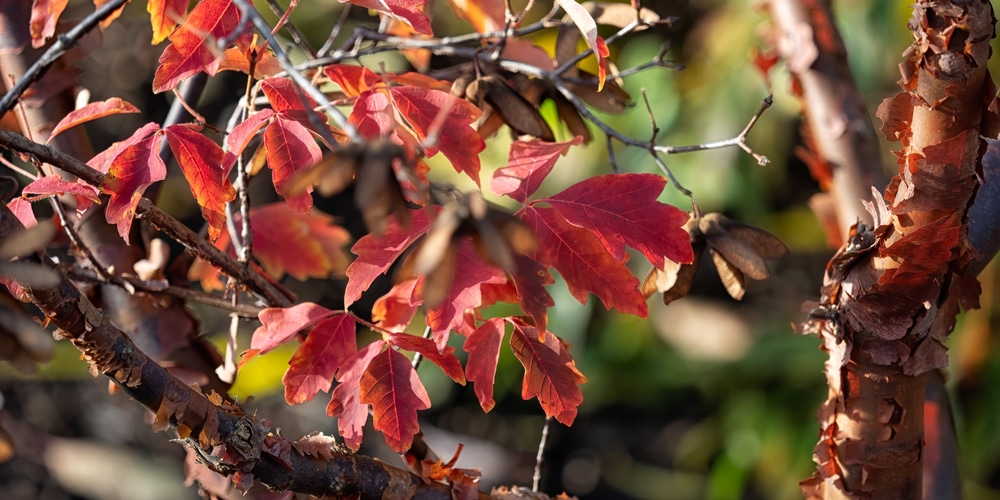The Acer Griseum tree, also known as the Paper-Bark maple tree, is a magnificent specimen that can be found throughout North America. This hardy tree is known for its striking paper-like bark, peeling away in thin layers to reveal a bronze-colored inner bark.
Prized for its showy fall color and interesting form, the Acer Griseum is a popular choice for both residential and commercial landscapes.
While the Acer Griseum is a tough tree that can withstand cold winters and hot summers, it does require some special care to ensure that it stays healthy and grows to its full potential. Here are a few tips on Acer Griseum care.
| Botanical Name | Acer Griseum |
| Common Name | Paper Bark Maple |
| Plant Type | Perennial |
| Flower Color | Yellow-green |
| Size When Mature | 180 – 360 inches tall |
| Bloom Time | Early Spring |
| Sun Requirements | Full sun or partial shade |
| USDA Hardiness Zones | 4 – 8 |
| Soil PH Range | 5.0 – 7.0 |
| Soil Type | Well-drained soil, neutral to acidic |
| Water Needs | Medium |
| Native Area | China |
What You Need to Know About Acer Griseum
With the bark and its flowers equally showing, the Acer griseum is a tree that will turn heads. If you live in an area where this tree grows naturally, you’ll find that it’s a popular choice for both home and commercial landscapes.
Growing anywhere from 15-30 feet tall, with a spread of 15-25 feet, the Acer griseum is a deciduous tree. This tree has delicately textured, oval to triangular-shaped leaves that turn a beautiful crimson red in the fall.
As the tree ages, the outermost layer of bark begins to peel away in thin strips, revealing a gorgeous bronze inner bark.
Awakening after the winter, the tree shows clusters of yellow-green flowers that dangle from its branches in early spring. These are followed by winged seeds (samaras) that ripen and mature throughout the summer months.
This low-maintenance tree is perfect for those who don’t want to spend a lot of time caring for their trees. Because it’s a slow-growing plant, pruning is only necessary every few years to remove any dead or diseased branches.
It’s also a great choice as a specimen plant in small yards or as part of a larger landscape.
How to Care for Acer Griseum
Here’s everything you need to know about growing and caring for a thriving Acer Griseum or Paperbark Maple tree:
Light
The Acer Griseum thrives and grows well in full sun to partial shade. In hot summer climates, it’s best to provide some afternoon shade to protect the tree from the harsh afternoon sun. While the tree can tolerate some shade, it will not produce as many flowers, and its fall color will be less vibrant.
Additionally, when exposed to extreme heat or direct sunlight, the leaves of the Acer Griseum can scorch and turn brown. If this happens, simply remove the affected leaves and provide the tree with some relief from the heat.
Water and Soil Needs
It is tolerant of a wide range of soil types, but it cannot tolerate drought. It prefers clay, loamy, or sandy soils that are moist but well-drained.
Water deeply and regularly during the first growing season to establish a deep, extensive root system. After that, water as needed to keep the soil moist but not soggy. Acer Griseum is a slow-growing tree, so it will not need a lot of water once it’s established.
Temperature Requirements
The Acer Griseum is hardy in USDA zones 4-8. This tree can withstand cold winters and hot summers, making it a good choice for a wide range of climates. Moreover, when grown in colder climates, the tree’s fall color is often more vibrant.
Fertilizer
The best fertilizer to use on an Acer Griseum is an all-purpose, slow-release granular fertilizer. Apply the fertilizer in early spring, before new growth begins. Preferably, if you can provide organic fertilizer, it will be the best option for your tree.
Common Diseases
The Acer Griseum is relatively disease and pest-free. However, it can be susceptible to aphids, scale, and other sap-sucking insects. These pests can cause the leaves to turn yellow or brown and can lead to stunted growth. If you see any signs of pests on your tree, treat them with an insecticide as soon as possible.
Acer Griseum Propagation
Growing from seed is often the best way to propagate Acer Griseum. You can collect the seeds from the tree in late summer or early fall. The seeds will need to be stratified (a process of cold conditioning) before planting. Once stratified, plant the seeds in a seed-starting mix and keep them moist until they germinate. It can take up to two years for the seeds to germinate, so be patient.
If you want to grow Acer Griseum from cuttings, choose a well-established tree to take your cuttings from. Cut 6-8 inch (15-20 cm) stem tips in late spring or early summer and root in moist sand, perlite, or vermiculite. Keep the cuttings moist and in a shady spot until they have rooted.
Related Article: 12 Trees with White Bark


